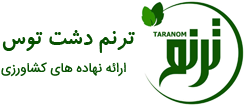- شما هیچ آیتمی در سبد خرید خود ندارید
- قیمت کل: 0 تومان
Missouri ranks third in the United States in cow-calf production, and much of the land these cattle graze has acidic soil that is low in plant available phosphorus (P). Proper soil fertility is important to ensure that these forages meet the nutritional requirements of cattle. Tall fescue (Festuca arundinaceum (Schreb.)), has been shown to respond to increased soil P levels with increased growth and leaf concentrations of P, calcium (Ca), magnesium (Mg), and potassium (K). It is unknown if winter annual cereals will respond similarly. The objective of this study is to examine cereal rye (Secale cereal L.), winter wheat (Triticum aestivum L.), and oat (Avena sativa L.), grown over winter for early spring forage production, and their response to different levels of P fertilization. In October of 2016 and 2017, the three species were planted at the Missouri State University Shealy Farm. Treatments of 0, 25, 50, and 100 lbs/acre P were applied in early winter. Forage was harvested the following spring, and nutrient concentrations were determined. In all species, P concentration in the leaf tissue increased with increasing P treatment levels. P fertilization caused an increase in Ca and Mg at the 100 lb treatment, and an increase in leaf K at the 50 lb treatment in oat. In winter wheat, P fertilization increased Ca concentration at the 25 lb, and Mg at the 50 lb treatment. There was no effect of treatment of K concentration in winter wheat. There was no significant effect of treatment on leaf Ca, Mg, or K in cereal rye. These findings suggest that P fertilization can influence the nutrient concentrations of winter wheat and oat, but have no influence on nutrient concentration of cereal rye.
Young, Taylor Anne, “Macronutrient Content of Winter Annual Cereal Grains with Phosphorus Fertilization” (2019). MSU Graduate Theses. 3382.
https://bearworks.missouristate.edu/theses/3382/



